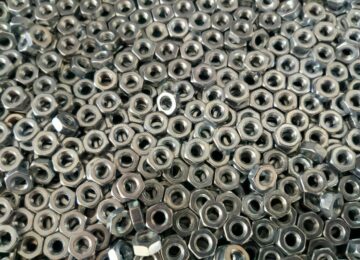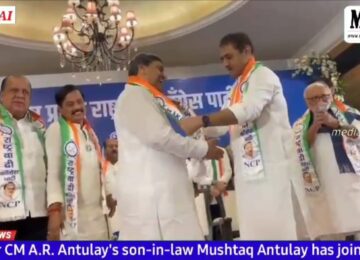Anupama Nair
Our great Prime Minister Modi inaugurated the Amrit Mahotsav or celebration of India’s 75th year of Independence. We will be celebrating this event till 2022. I am going to write a feature on all those great men and women who fought against foreign invasion not just against the British. Today I am going to write about Naiki Devi , who defeated Ghori . Have you heard this story before? I am sure the answer would be no, as our history in text books was written mostly by people who were not patriots. There are many dynasties who ruled for centuries, but few invaders who ruled for lesser years got more coverage in our curriculum. Many warriors, especially brave queens were neglected and never included in history. One such brave queen is Nayaki Devi, the queen of Gujarat who defeated Muhammad of Ghori 14 years before he faced Prithvi Raj Chauhan and her daughter Kurma Devi, who defeated Aibak.
The legendary queens in India, Egypt, Greek and Roman mythology were warrior women who have fascinated the world from time immemorial. India, too, has its own share of indomitable women who proved themselves to be fierce fighters and skilled leaders. Making military strategies to storming the battlefields, these courageous queens were truly a force to be reckoned with and second to none. Rani Lakshmi Bai, Rani Abbaka Chowta and Kittur Chenamma were three of the more well-known examples. However, there are many more whose stories have been forgotten in the annals of history. Among these unsung warrior women is Naiki Devi, the Goan princess who went on to become the Chalukya queen of Gujarat and defeat the mighty Muhammad Ghori in the battlefield. Later her daughter Kurma Devi almost killed Aibak. Not much is known about these great queens of India.
Naiki Devi was a Great Indian warrior queen, born to Paramardin, who was the Chief of Kadamba ( Goa), and was married King Ajayapala of Gujarat who ascended the throne of Gujarat in 1171 AD. Unfortunately, King Ajayapala could only rule for four years. After his death his elder son Mularaja II became his successor. As the new king was a minor, his mother Naiki Devi ascended the throne and effectively ruled on his behalf as a regent. Naiki Devi was well-trained in sword fighting, cavalry, military strategy, and all other subjects a queen needed.
In the year 1173, the young Ghurid prince, Muhammad Shahabuddin Gori had just managed to conquer the Ghaznavids in Afghanistan, and he did something which no other king could do, when the troops of Alexander the Great, the Persians, the Arabs and even Mahmud of Ghazni could not — conduct successful invasion deep into the heart of the Indian Subcontinent.
Muhammad Ghori first invaded Multan and the fortress of Uch. After achieving victories in Multan and Uch, he eyed the Rajputana and Gujarat. Can you guess his target? — the prosperous and well-fortified town of Anhilwara Patan (Gujarat). It was established by Vanraj of the Chapotkata dynasty in the 8th century, and Anhilwara Patan was the capital of the Chalukya (also known as the Solankis) who ousted the Chapotkatas. The famous American historian Tertius Chandler, stated “the ancient citadel was the tenth-largest city in the world in the year 1000 AD, with a population of approximately 100,000”.
Gori was confident he would defeat the kingdom as he assumed a mere woman and her child would not provide much resistance. But unfortunately for him , he learnt a lesson– never to underestimate the great valor of a young Indian queen. Unconcerned about the prospect of Ghori’s impending attack, she took command of the Chalukyan army and threw herself into organizing a well-planned opposition to the invading army. Naiki Devi, also sent out emissaries to forge crucial partnerships and request assistance from nearby provinces for help, including Prithvi Raj Chauhan. However, these kingdoms did not accede to her request, but she did receive aid from Chalukyan feudatories such as the leaders of the Naddula Chahamana clan, the Jalor Chahamana clan, and the Arbuda Paramara clan.
Nayaki Devi now was thinking of a strategy to defeat the enemy. She even cleverly chose the site of the battle — the hilly passes of Gadaraghatta at the foot of Mount Abu near the village of Kasahrada, (Kyara in Sirohi district which is 65 km away from Anahilavada). The narrow passes gained were a huge advantage and surprisingly, the invading army was at great disadvantage. The Chaulukyan army was headed by Nayaki Devi with the boy-king sitting on her lap. Her army and the troop of elephants crushed the massive army, which were famous for defeating the mighty Sultans of Multan. Nayaki Devi killed several enemy soldiers, and
Ghori the coward he was fled with a handful of bodyguards. The battle was known as Battle of Kasahrada.
This defeat forced Ghori to change his plan next year while invading India, and entered India through Khyber pass, and captured Peshawar followed by Lahore. It can be mere co-incidence that this was the route taken by Alexander the Great and Mahmud of Ghazni. Later on, after him the cruel assassin who butchered humans, Taimur also took the same route during his conquest of North West India in 1383, and so would his descendant another assassin who butchered humans — Babur, on his way to founding the Mughal empire in India in 1526. These invaders are glorified by the historians in India as if they came to my great country for the benefit of Indians and not to loot the great wealth which India was always famous for. They have streets named after them; their portraits are hung in the party office of a political party I do not want to name here. An actor couple named her son after one such invader, as if there was shortage of names.
If the strong queen of the Chalukyas had not taken charge, it is quite possible the History of India would have been very different. However, the great queen is unknown and buried in the sands of time, while these invaders are well-known. Naiki Devi’s victory is mentioned in the state chroniclers of Gujarat as well as Chalukyan inscriptions. There are two Sanskrit inscriptions in Gujarat, where Mulraja II is mentioned as the conqueror of Garjanakas (dwellers of Ghazni and “even a woman could defeat the Hammira during the reign of Mulraja II”.




























